Review: LG V40 ThinQ
Oct 3, 2018, 4:01 PM by Eric M. Zeman
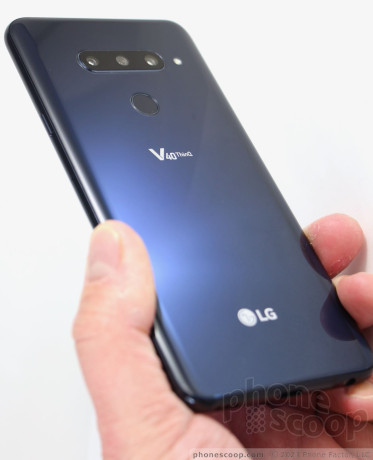
LG's latest flagship includes five cameras to offer the widest-possible range of capture capabilities. The V40 ThinQ also features a gorgeous display, sultry materials, class-leading specs, and quick access to Google Assistant and Google Lens. If you want to know everything about LG's latest Android phone, read Phone Scoop's in-depth review.
Hardware
Is It Your Type?
LG's flagship phone for the back half of the year is the V40 ThinQ, a device that wields five cameras in order to give picture-obsessed peeps more options. The V40 is for those who put a premium on photography, screen size, and audio quality.
Body
The V40 ThinQ doesn't stray from the conservative design language that LG has relied on for its most recent phones, including the G7 and V35. It's as if these two phones hooked up and the result outgrew them both. The V40 ThinQ is a large, smooth glass slate that keeps its footprint in check when compared to other phones in this class.
I'd call the shape of the V40 borderline generic. It's a vanilla slab that has comfortably rounded corners and side edges, giving the phone a river rock smoothness. Like most modern flagships, the V40 is a metal-and-glass affair. Two glass panels sandwich a metal frame that forms the center of the chassis. LG says it took special care to sandblast the rear panel to give it the smoothest-possible texture while safeguarding it from scratches. It's absolutely liquidy.
The curves of the glass are finely detailed. I particularly like the way the rear panel bends toward the metal frame all the way around.
LG says the V40 will come in several shades, including black and a deep blue. The blue of the glass is so deep that it's hardly distinguishable from black. You'll only notice the color when it catches the sun a certain way. The frame, however, is painted black. I like this small detail.
The V40 is a big phone, and yet it manages to keep a rein on the dimensions compared to the Samsung Galaxy Note9 and Apple iPhone Xs Max. It stands 6.24 inches tall, but squeaks in under the critical 3-inch-wide mark by 0.01 inches. It's bigger in both dimensions when compared to the V30, is about the same height as the G7 and is wider than the G7. The V40 is shorter and narrower than the Note9 by a hair's breadth or two. Despite the large frame, the V40 still manages to feel comfortable to hold and use. I have to credit the finely rounded edges and the 7.9mm thickness, which go a long way to help hand fit. People with the smallest hands will surely find the V40 too large. Most everyone else should be able to get by.
The slippery glass means the phone will glide into and out of your pockets. With two glass surfaces, the V40 is twice as likely to break when dropped. It's not a rugged device by any stretch, though the IP68 rating will keep it from succumbing to water and dirt.
No Notch
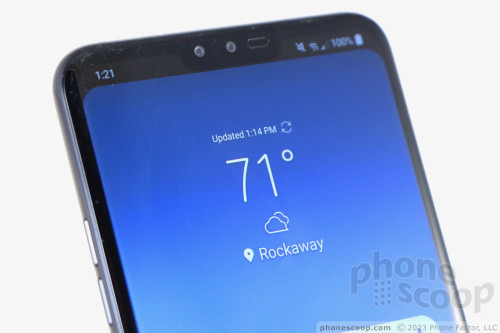
I can find no fault in the materials and manufacture. The glass is ultra fine and the metal frame, thin though it may be, comes across as strong and sturdy. LG has matched Apple, Samsung, and Huawei in crafting an elegant piece of hardware.
Like many flagships aiming for the all-screen look, the V40 has a notch cut into the top of the massive display. The notch hides two user-facing cameras and the earpiece speaker, which is covered with a small grille. Otherwise the rest of the phone's face is screen. The bezels to the sides and bottom are minimal. There are no hardware controls or buttons on the front. The V40 has a clean, obsidian face.
Notch
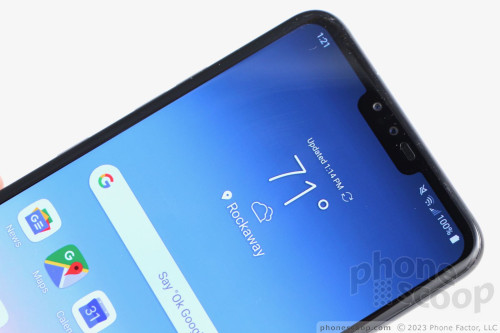
The V40's side buttons mirror those of the G7. You'll find the screen lock button on the right edge. It has a rather minimal profile and yet still delivers excellent travel and feedback. The three buttons on the left edge are more or less the same. I like that the volume toggle has been broken up into separate keys.
The third key is a dedicated Google Assistant button. Press this key once to call up the Google Assistant — no matter what else you might be doing — or press it twice to open Google Lens. I'd love to know the split on how many people appreciate this button and how many find it annoying. You can disable it, but not remap it.
The tray for the SIM and memory cards is buried in the right edge of the phone. You'll need a tool to eject it. The tray is a side-by-side design and accommodates one nano SIM card and one microSD expandable memory card.
Headphone fans rejoice! The V40 is one of the few flagships that still includes a dedicated 3.5mm headphone jack. More importantly, the jack is powered by a quad DAC, meaning you get top-level sound from wired headphones. The jack is on the bottom, as is the USB-C port and speakerphone.
Three cameras adorn the V40's rear surface, positioned in a slightly raised module that's close to the top edge. The module contains the three lenses: wide, normal, telephoto. The two-tone flash has been pushed off to the side.
Triple Camera
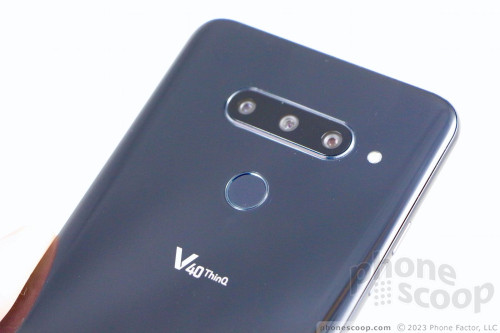
A standard fingerprint reader is beneath the camera module. It's in a good spot and is easy to find by feel.
LG has crafted a fine piece of hardware in the V40 ThinQ. It may not necessarily stand out visually from the competition, but it's no slouch.
Screen
The display is impressive. It measures 6.4 inches across the diagonal with quad HD+ resolution (3,120 by 1,440 pixels). The pixel density is outstanding and the screen offers silky smooth edges along text and imagery. LG opted for an AMOLED panel with support for HDR10. It's gorgeous. The high contrast ratio offers incredible blacks and eye-pleasing brights. The colors practically jump off the screen. Content that's available in HDR10 looks outstanding on the V40's screen. The display pumps out plenty of light. I was able to use the phone indoors and outdoors with no issues in visibility. Auto-brightness worked well.
This flagship offers all the amenities you expect when it comes to controlling the display. You can alter the color/tone, set the nighttime/blue light filter to come on, as well as adjust resolution.
Signal
LG will sell the V40 through all major U.S. carriers, as well as unlocked online. We tested an unlocked model that includes support for the LTE networks of AT&T, T-Mobile and Verizon. AT&T and T-Mobile customers will be happy to learn that bands 29/30 and 66/71 are aboard, respectively, for the best coverage and speed.
On both AT&T and Verizon networks, it did really well. The phone patched through all calls on the first dial and didn't drop any while I tested it. Data speeds were very good. Browsing through media-laden social networks was smooth, streaming HD audio/video content was clean, and downloading apps was painless. The phone is a fine wireless performer.
Sound
The V40 is a fine voice machine. The earpiece produces plenty of sound for calls. I was able to hear calls most places I took the phone, including subway platforms and moving cars. Clarity could be better. High volumes cause the earpiece to pop with some distortion now and again, but voices generally have a nice tone. People I spoke to through the phone said I sounded very clear.
The speakerphone is loud and can take advantage of a "booster" mode to crank it into the ridiculous. The powerful sound is perfect for taking calls in noisy spaces, or spreading a call around a large conference room. Similar to the earpiece, the speakerphone will distort a bit at higher volumes.
The V40 really disappoints me in that it doesn't have stereo speakers. Flagships from Apple, Samsung, and others produce a stereo effect by using the bottom-firing speaker in tandem with the earpiece when the phone is held sideways. The V40 doesn't do this; it only produces sound from the bottom speaker. That said, it can be set to crazy loud volumes and the clarity is pretty good. Still, it sort of ruins the experience if you're watching a video with cool stereo effects and the V40 can't reproduce two-channel sound.
On the flip side, the 32-bit quad DAC audio is a wonder when you plug the phone into a pair of high-end headphones or speakers. The clarity, punch, and sizzle of tunes streaming through quality gear can be impressive. This is a feature meant to entice audiophiles.
Battery
LG gave the V40 a battery that's technically smaller than those of competing phones in this class. For example, the Note9 has a 4,000mAh battery. The V40's 3,300mAh might seem lacking at first, but over the course of five days of testing, I can say that this battery outperforms its meager capacity rating. LG says it took special care to tap into the processor's power-saving features in order to provide the V40 with maximum efficiency, and those efforts appear to have paid off. The phone can glide through an entire day with plenty of juice to spare come bedtime. I never ran into the slightest bit of trouble.
However, should you run into trouble, LG gifted the V40 with bonus features to help manage battery life. It has a normal mode, an extended mode, and a maximum mode. The latter two can be tweaked to control how intensely they dial back performance. The V40 also allows you to fine-tune how much power individual apps are allowed to use apart from the battery saving tools.
The V40 supports Quick Charge 3.0 through its USB-C port. A fast charger is included. I found the battery often jumped by 25% in just 20 minutes. The phone also supports quick wireless charging and it is compatible with most wireless charging pads. The phone powered up rapidly when tested with several different charging pads.
Bluetooth, GPS, NFC, WiFi
All the standard radios are present and accounted for.
Bluetooth 5.0 ensures you can connect to headphones, speakers, your car, and PCs effortlessly. I paired the phone with a number of accessories and didn't encounter any issues. Music I streamed to my favorite pair of Bluetooth buds sounded excellent, and voice calls patched through my car were very good.
The GPS system worked flawlessly. I used the phone to plan trips around NJ and NYC with a mix of driving, mass transit, and walking. It managed to pinpoint me to within 10 feet in a blink. It's a fine navigation companion.
I appreciate the NFC radio's ability to help with Bluetooth accessories, which paired instantly when tapped to the NFC radio. Of course there's Google Pay for tap-and-go mobile payments.
I was pleased with the WiFi radio, which helped the phone download large apps and media files rapidly.
Last, there's an FM radio for you terrestrial die-hards. As long as you have a pair of wired headphones handy, you can dial in the local station of your choosing.
Software
Lock Screen
LG has a great Always On Display and made some small improvements to its software for the V40.
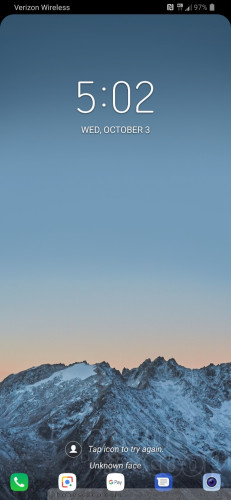
The Always On Display shows the time, date, and battery life in white on the black screen. The font is now thicker, making the clock easier to see at a glance. Notifications will cover the clock for a brief second before minimizing into little icons that sit next to the battery meter. I like that the icons are easy to glean (email vs. texts vs. calendar, etc.)
The V40 allows you to customize which shortcuts appear at the bottom of the lock screen (up to 5), as well as where the clock appears on the screen. You can also choose from several animations that play when you unlock the phone.
The V40 includes LG's KnockOn. With KnockOn, double-tap the display to wake the lock screen. This is most helpful when the phone is sitting on a desk or table. Alternately, you can use LG's KnockCode to set a screen lock using a tapped pattern.
The V40's fingerprint reader, located on the rear, is quick and reliable. It takes only a few moments to set up several fingerprints. I found the reader was the fastest way to unlock the phone. The fingerprint reader can also be used to secure photo galleries and QuickMemo files, but strangely not apps or folders.
The V40 includes facial recognition for unlocking the phone. The tool is simple to configure. Using the software, you can record your face a single time for faster performance, or multiple times to improve security at the expense of speed. LG takes care to warn that its facial recognition is not as secure as a fingerprint. It's certainly not as fast, nor as secure, as Apple's Face ID.
Home Screen
The V40 ships with Android 8.1 Oreo and LG's ever-present schmear of user interface tweaks.
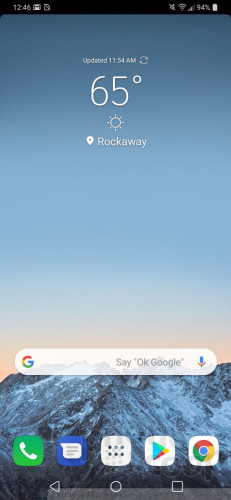
Out of the box, the default setting doesn't include the app drawer, so all the apps are packed together on the home screen panels. You can enable the app drawer, though, if you prefer a more curated home screen. I like that you can arrange apps alphabetically, in folders, or any random order.
The V40 also includes EasyHome, a stripped-down experience for smartphone beginners.
As for other tweaks, you can switch up wallpapers; choose from various grid configurations (4x4, 4x5, 5x5); hide apps you know you won't use often; control behaviors such as fonts, font size, button arrangement, animations, and so on.
The main settings tools are broken down into several tabs by default, but you can switch it so everything appears on a single screen. It's a lengthy menu that's not exactly user-friendly. Fortunately, a search function helps you find specific settings and I suggest you use it if you're in a hurry.
You can opt to turn on a Google Feed screen, which will appear as the left-most home screen.
The V40 ships with Qualcomm's Snapdragon 845 processor and 6 GB of RAM, which helps it feel spry and slick. I didn't run into any glitches or performance problems. The V40 handled gaming, split-screen multitasking, and other processor-intensive tasks without breaking a sweat. It's a really fast phone.
Floating Bar
The Floating Bar is an optional shortcut tool. It supports up to four different sets of controls: shortcuts, screen capture tools, music player, and contacts.
When activated, the Floating Bar is accessible from either the right edge of the left edge of the V40. It appears as a small arrow in a half circle along the screen's border. I like that it comes and goes whenever you want. The Floating Bar reminds me a bit of Samsung's Edge Screen tool on Galaxy handsets, but it doesn't completely overtake your screen the way Edge Screen does. You can customize the bar to a degree, such as choosing the app shortcuts and top five contacts. I get the idea here, but I'm not sure the Floating Bar is any quicker to use than the standard home screen shortcuts.
Camera
The V40 doesn't have a physical camera button, but you can launch the camera from the lock screen or with a quick double press of the screen lock button. It opens instantly.
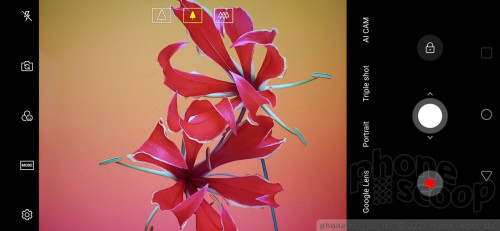
The main viewfinder is fairly typical. Standard controls are all on the left. HDR is buried in the settings menu, but you can set it to "auto".
I like that you can drag the shutter button up and down to zoom. Further, thanks to the dedicated video capture button, it's easy to start taking video and then snap photos while shooting video.
The V40's unique feature is the three cameras. Buttons at the top let you quickly switch between the ultra-wide, normal, and telephoto lenses. This functionality is always available, across camera modes.
Triple Shot is a dedicated shooting mode that you have to turn on separately. With it, the V40 takes three successive shots with all three cameras (wide, normal, telephoto) and then stitches the results together into a shareable MP4 complete with dramatic music. It takes some practice, and your results will vary a bit. The key is to always place the subject in the center of the screen. You can set it so the MP4 zooms in or zooms out.
Triple Shot also allows you to capture full-resolution images from all three lenses at once. This is really neat, allowing you to have fun afterward with the full frame shots.
The V40 includes LG's AI Cam. Thanks to the scene recognition capabilities of the Snapdragon 845, the AI Cam is able to discern between about two dozen different scenes. These let the camera know when you're taking a close-up, or a shot of your pet, or a nighttime portrait. The software matches the recognized scene with camera presets in order to take the best possible picture for that scene. This has become a common feature across flagships this year.
When using AI Cam, you'll see text keywords float on the screen as it tries to determine what it's looking at. You can take the picture whenever you want; you don't have to wait for the AI Cam to do its thing.
Portrait mode is available. The camera puts the multiple rear lenses to work to create photos with bokeh (blurred backgrounds).
To access the other shooting modes, you need to hit the "mode" button. The options there include manual, manual video, cine video, Cine Shot (cinemagraph), food, slow-motion, panorama, and GIF-maker.
Manual mode is for those with the know-how to make it work. It gives you full control over everything: white balance, focus, brightness, ISO, and shutter speed. Shutter speed can be set as long as 30 seconds, (for dramatic and/or creative night shots.) You can also set the auto-exposure to lock. Each option has its own slider that lets you adjust on the fly. The V40 supports RAW capture, which is best if you intend to do a lot of PC-based editing.
You can take advantage of the Graphy manual-presets when using the manual mode. These allow you to manually select scenes — cafe, city street, sunset, people, scenery — in order to help guide you with the manual settings.
The V40 carries over the Cine Video mode we saw on the G7 earlier this year. This mode gives you 15 Hollywood-style filters for capturing video. Each filter has a distinct look and feel, helping videos stand out. For example, Noir is very 1930s detective-y, while scenery is better for landscapes, and summer blockbuster is great for outdoor action. You can adjust the strength of the effects. You can add the video filters at will while capturing video, and mix and match styles when editing the results later.
The Cine Shot feature lets you take a "picture" with limited motion in it. You select the part of the picture where you want to see motion, such as a flag waving in the breeze, and the rest of the image remains still. The Cine Shot is then saved as a shareable file.
The phone automatically activates Super Bright Mode when needed. When it senses low-light scenes (3-10 Lux) it will suggest you turn on Bright Mode. When it senses really dark scenes (2 Lux or less) it will automatically turn on Super Bright Mode. This mode uses pixel binning to turn four individual pixels into one larger pixel, to capture more light with less noise. The results definitely show more detail in the dark.
There's no timelapse mode, but LG did add AR Emoji. These allow you to slap animated AR stickers onto your photos. You can download additional modes directly from LG. Time lapse seems like one that should be included from the onset.
The selfie camera includes its own portrait mode (using the two user-facing lenses), its own filters, and its own set of stickers for dressing up selfies.
The one thing that bugs me is the speed. Any phone with the Snapdragon 845 should simply perform flawlessly, speedily. The V40 camera app does not. The biggest hangup is switching between the three lenses. Whenever you tap the little icon to jump from wide to normal, or normal to telephoto, you're forced to wait a second or two during the transition. It's slow enough that you're likely to miss shots if you're in a hurry. The other problem is focus. The V40's camera takes forever to focus in low-light settings.
The V40 has an incredibly powerful camera that offers tons of creative tools. I hope LG rolls out an update to the app to give it a speed boost.
Photos/Video
The V40's three cameras are: an extra wide-angle 16-megapixel sensor at f/1.9 with a 107-degree field of view; a standard 12-megapixel sensor at f/1.5 with a 78-degree field of view; and finally a telephoto 12-megapixel sensor at f/2.4 with a 47-degree field of view. These give you unprecedented freedom in capturing images that are far or near. As much as I like telephoto lenses for the (effective) optical zoom, I often long for super wide lenses to capture those neat spaces that require the biggest-possible field of view. The V40 lets you do it all.
Focus is mostly razor sharp. The wide-angle and normal lenses produced the sharpest results, with the telephoto trailing, likely because it's more susceptible to lens shake. Exposure is generally on point. The phone works hard to get the right amount of light into each shot, and LG's software adjustments get the job done. For example, I took the V40 to a concert and the phone managed to prevent the stage lights from blowing out the sensor while also delivering detail in the dark areas. That's really hard to do. The color and tone of pictures varies a bit depending on what you're shooting. The V40 seems to boost colors in some shots and not others.
Here are some samples of the wide, normal, and telephoto lens shots.
The portrait modes produce results that are in line with competing phones from Apple and Samsung. I like that you can adjust the level of blur when taking shots.
The selfie camera can capture normal-angle (80 degrees) and wide-angle (90 degrees) shots. The first is 8 megapixels at f/1.9 and the second is 5-megapixels at f/2.2. The difference between the results is subtle. The small change in field of view may not seem like much, but it helps you put more people in the frame without distorting the image. The selfie portrait mode works well enough, but can produce some stinkers from time to time.
The video camera is excellent. It captures video up to 4K. The results were sharp, colorful, and spot-on with respect to exposure tone. I was very pleased with the quality of the accompanying audio. LG's software dials down background din to capture the sound you want. The stereo capture effect is quite good.
The LG V40 has a fine camera. I think the Note9 and iPhone Xs Max are slightly better.
Wrap-Up
The V40 ThinQ is a good device; a perfectly serviceable phone that will do what people want it to do without too much trouble. It could do more to stand out, but I admit that looks aren't always everything.
The metal-and-glass chassis is well-made, from fine materials. The huge display is impressive. The core functions — wireless performance, voice quality, and battery life — are all where they need to be. Some will surely appreciate the high-quality headphone jack, but I'm sad about the lack of stereo speakers.
LG's take on Android 8.1 is a bit busy and involved for my tastes, but it offers a lot of avenues to personalize the phone. The software lets owners take control of nearly everything and the underlying processor ensures the phone runs smoothly.
The camera app is incredibly powerful, if also incredibly overwrought. I like the sheer volume of capture modes, but they are scattered all over the place and often come with a learning curve. Thankfully the three lenses provided unique flexibility and the resulting images are mostly of high quality.
All the major U.S carriers will sell the phone, including AT&T, Sprint, T-Mobile, US Cellular, and Verizon. Pricing ranges from $900 to $980 depending on the carrier.
The LG V40 is a nice phone. It's attractive, capable, and well-built. Whether you opt for this over an IPhone or Note is purely a matter of taste.
Comments
The V40: LG's Best Since the V20
(continues)


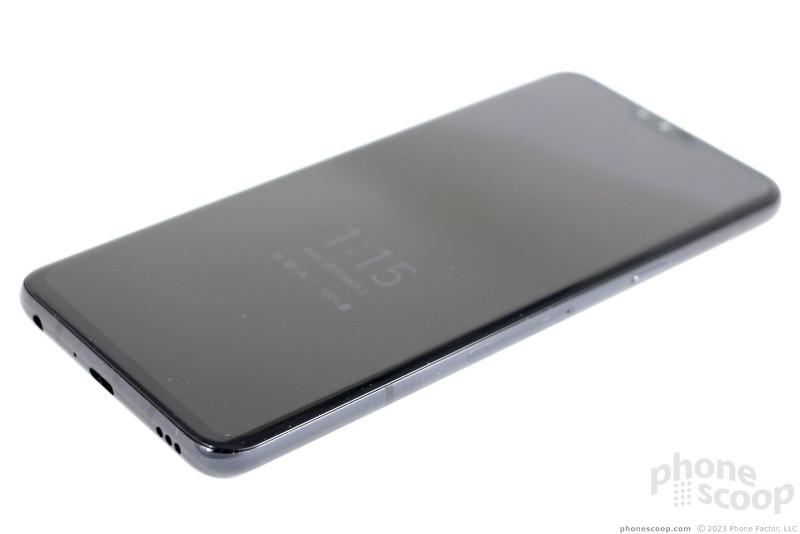












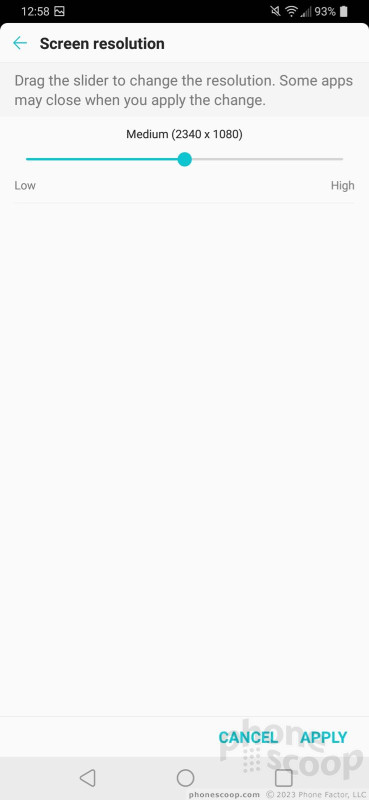








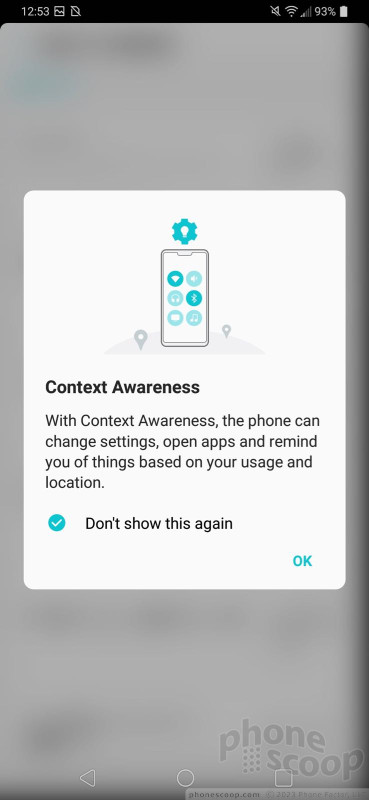







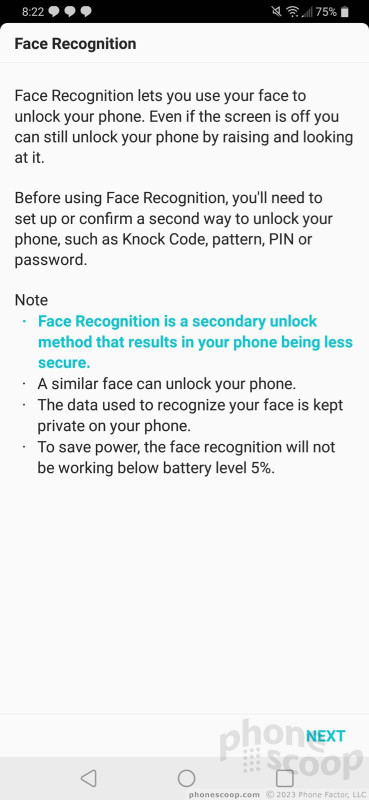








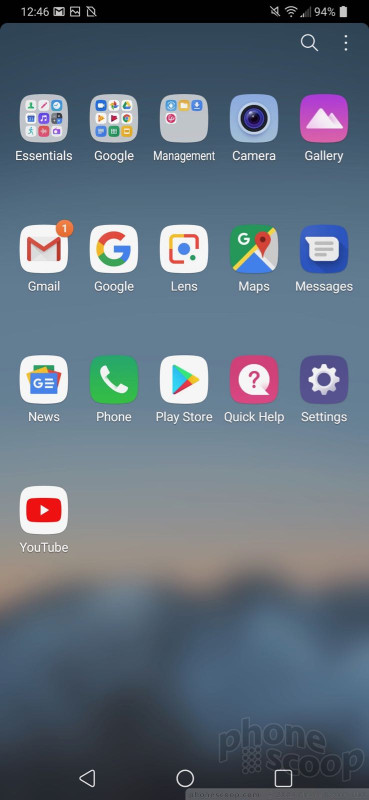










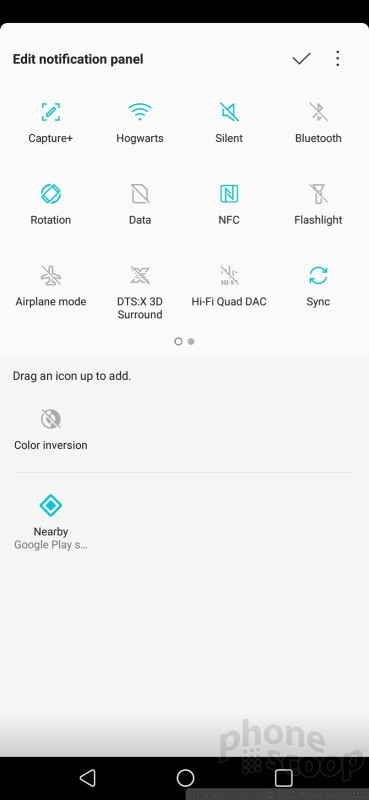





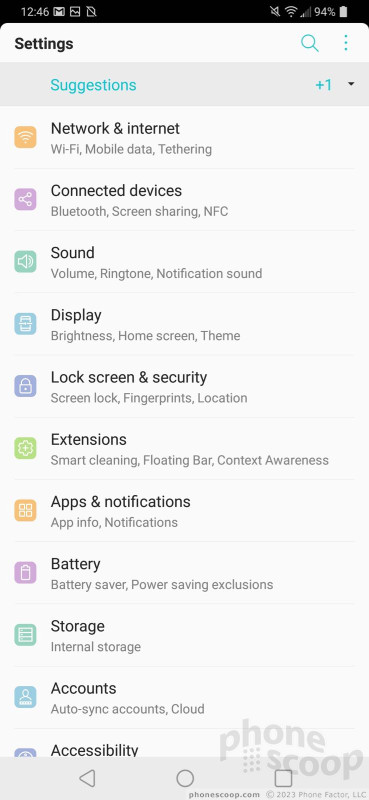





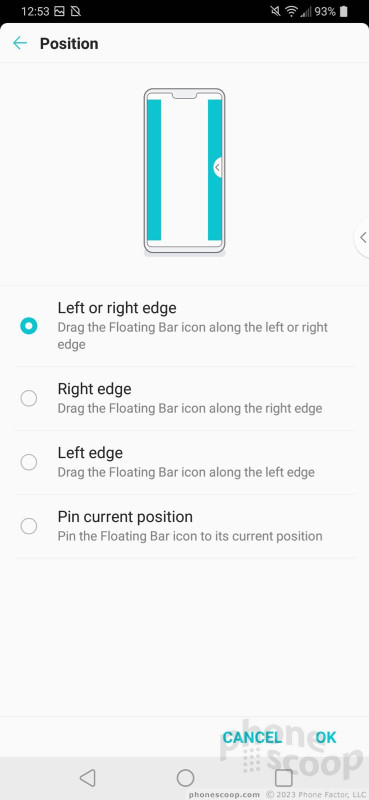




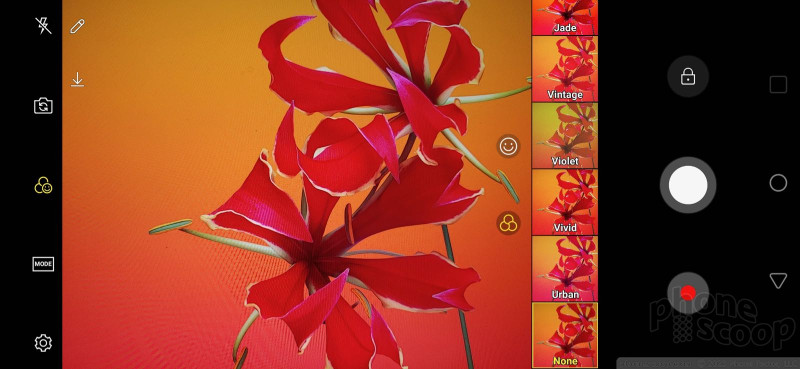





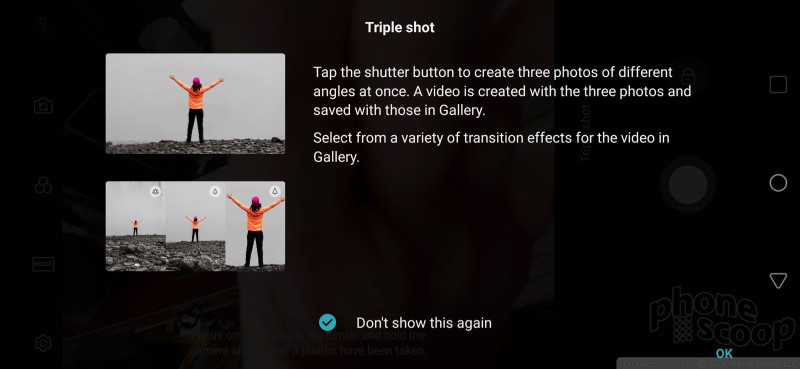


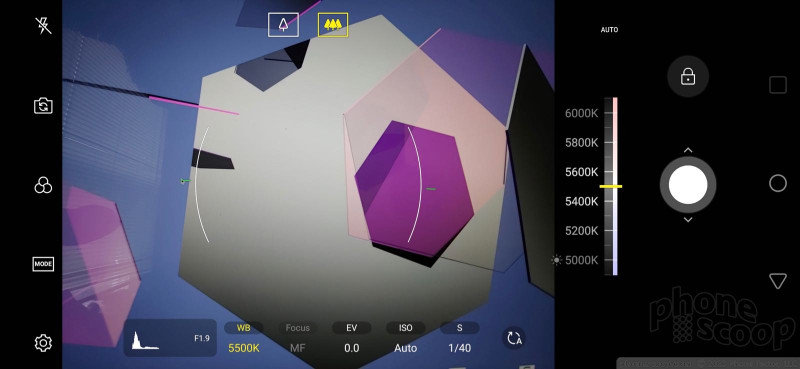
































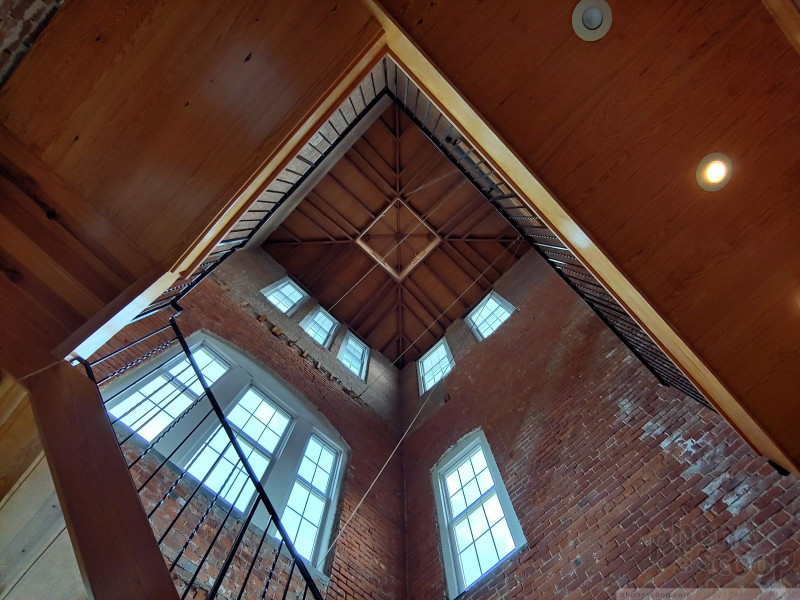









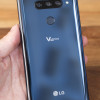 Video and Photo Tour of the LG V40 ThinQ
Video and Photo Tour of the LG V40 ThinQ
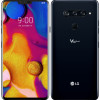 LG's V40 ThinQ Ups the Ante with 5 Cameras
LG's V40 ThinQ Ups the Ante with 5 Cameras
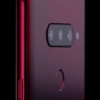 LG's V40 ThinQ To Feature Cinemagraph Capture
LG's V40 ThinQ To Feature Cinemagraph Capture
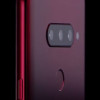 LG Touts V40 ThinQ's 5 Cameras and 6.4-Inch Screen
LG Touts V40 ThinQ's 5 Cameras and 6.4-Inch Screen
 iPhone 15 Series Goes All-In on USB-C and Dynamic Island
iPhone 15 Series Goes All-In on USB-C and Dynamic Island
 LG V40 ThinQ
LG V40 ThinQ









